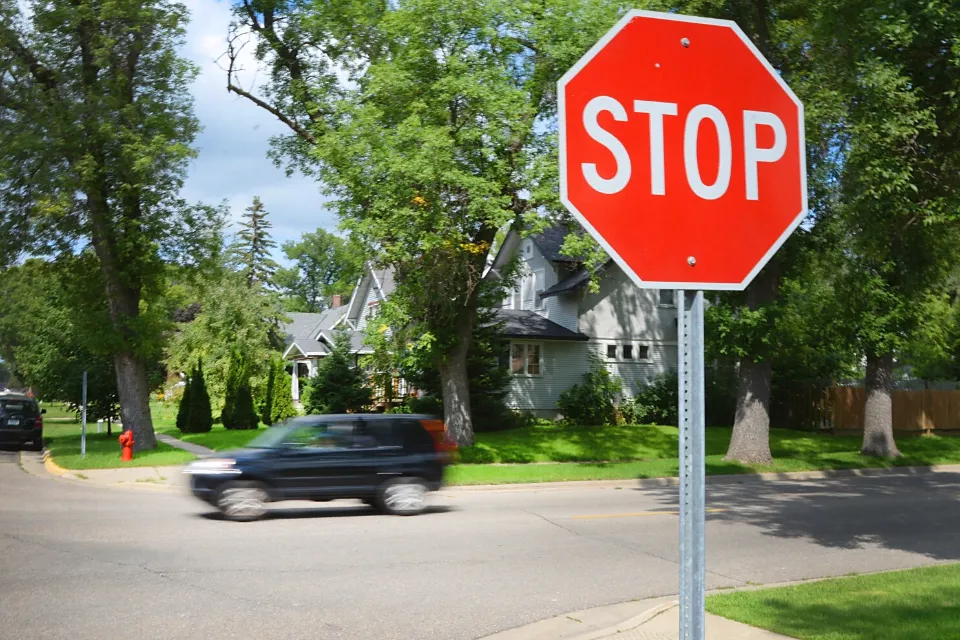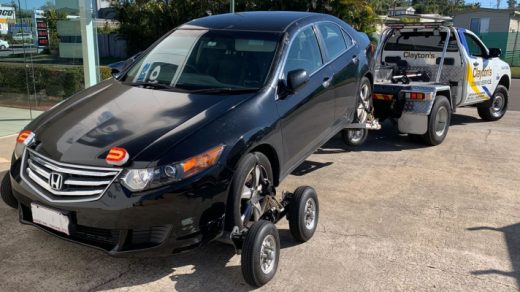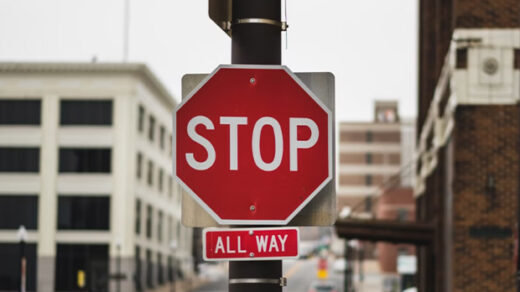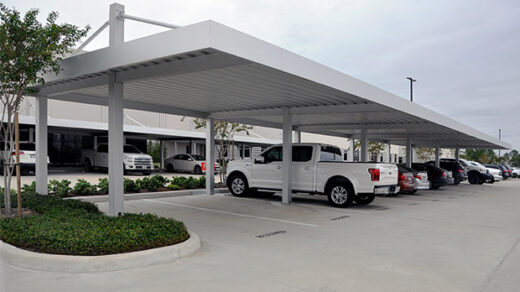Street parking is tricky, especially in big cities, do you know how close can I park to a stop sign? In this guide, we will cover all aspects of stop signs.
At the very least, you should stop the car 30 feet from the stop sign. And depending on where you intend to park, the distance might change by a few feet.
It may seem challenging to remember every distance, but this is untrue. If you keep in mind the locations mentioned in this article, you’ll be able to get to the majority of the places you need to be.
Table of Contents
Understanding the Stop Sign
Let’s first provide you with some information about the sign if you are unsure of the type of stop sign we are referring to.
- Shape: Octagonal
- Colour: Red and White
- Placement: Right side of the road
From a distance of three meters, oncoming traffic should be able to see the sign.
- Meaning: When nearing a marked line, come to a complete stop.
When a stop sign is present, the driver is required to stop at the designated stop line marked over the roadway. The driver needs to search for a crosswalk if there isn’t a line.
Last but not least, if there is no crosswalk or intersection nearby the sign, there must be a fire hydrant or waiting area. Therefore, stop your car, check to see if you are breaking any traffic laws, and then continue.
Also Read: What Does The No Parking Sign Mean?
What is the Safe Distance to Park Near a Stop Sign?

Before giving you the information about where you should stop, let us tell you where it is not allowed to park, stop, or stand:
- Close to a crosswalk at an intersection
- Any marked zone saved for pedestrian
- Near a construction site
- On a railway track
Now let’s come to the question of where to stop:
- 5 to 6 feet if it is a driveway
- For railroad crossing, consider 50 feet
- 15 feet away near a fire hydrant
- A gap of 20 feet for a crosswalk
- Park 20 feet away from a fire station driveway
- 30 feet of traffic light stop or yield sign
Why Should You Not Park 30 Feet Away?
The basic purpose of a STOP sign is to warn drivers of an approaching crosswalk, intersection, or end of a traffic line. When you see a STOP sign, slow down and prepare to stop at the indicated point and yield the right-of-way to other vehicles and pedestrians before proceeding safely.
A STOP sign may be hidden from oncoming traffic by a parked car in front of it. Additionally, the consequences could be dangerous if drivers disregard a STOP sign and the law. Running an intersection is a frequent reason for collisions and can result in damage, loss of property, or even death. In addition, the vehicle blocking the STOP sign is liable for damages caused, depending on the local laws and police report.
What Will Happen If You Disobey the Stop Sign?
It may seem harmless for the person who is parking to break the rules of parking or stopping. It might not be the same for other drivers, though, as they cannot see the sign if the other driver is blocking it with their vehicle.
Your concern for the parking distance primarily demonstrates your consideration as a driver and your consideration for the drivers behind you. You can reduce the possibility of a car accident or collision by being the first vehicle to enter an intersection and parking safely away.
It is tempting to park or stand where there is usually no one around a stop sign. But keep in mind that doing so is against the law, and you should never park anywhere near the area that we have previously mentioned in the chart.
What Can You Do to Avoid Confusion?
It is simpler for people who live in larger cities to park their cars because there are so many garages or paid parking spaces available in almost all of the public areas. Despite the price, you don’t need to be concerned about the parking fine.
Understanding specific terminologies may also aid in your ability to comprehend traffic laws more clearly. They are:
Parking:
When you stop the car for an extended period of time, you are parking. Furthermore, neither people nor goods are being loaded by you. In some states, it will be regarded as parking for the duration if you remain in the vehicle without turning it off.
Standing:
The brief period of time required to load or unload any passengers is referred to as standing. You are not permitted to load or drop any packages while standing.
Stopping:
Stopping, as the word suggests, is when you put your car in park and briefly follow any traffic signal.
You can see how the distance between the stop sign and your car will also depend on why you want to stop the car.
How Do You Fight the Penalty?
The news is not good because the fine will stay on your driving record. To resolve the situation and clear your name, you must pay the fines as soon as possible.
However, since the Highway Traffic Act of Ontario makes no mention of how long or how far you must stop, you might feel that the fine is being imposed unfairly. In that case, you can file to the court or hire a lawyer.
In the Court:
File the ticket in court if you believe you have sufficient justification to convince the judge that the traffic officer has wrongfully accused you.
You have the option of choosing to meet with the prosecutor after submitting the ticket to the court. You must reassure the court in the forum that the case is well-supported by the evidence and that a trial is the only effective means of resolving the dispute.
On the other hand, the court and the accused driver move forward with the case if it can be resolved with a substitute offense.
We want to point out that if the police officer isn’t present on the day of the trial, your chances of winning the case will be higher.
Hiring a Lawyer:
Hiring a neighborhood traffic attorney is the second and most dependable choice. A paralegal is another resource you have access to. You need the assistance of a knowledgeable attorney in this area because the processes in cases involving traffic laws are complicated and require a great deal of strategic knowledge to resolve.
Conclusion: How Close Can I Park to a Stop Sign
Isn’t it better to be aware of where you can and cannot park so that other drivers don’t perceive you as a bad driver? Now that you know how close you can park to a stop sign, you should follow them to avoid such situations and even the unnecessary parking fine.
Even if you can’t recall how far away from the stop sign you need to park your car, try to leave at least 30 feet between you and it. But keep in mind that the length will differ depending on the state. Do your research on the local traffic control laws in order to avoid confusion.
Also Read: Can You Park At A No Standing Sign?



